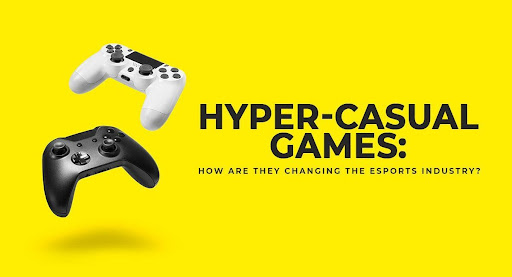Hyper-casual games: How are they changing the Esports industry?
The market of hyper-casual gaming is booming and plays the role of a catalyst to propel the economic force. In an article by Business Insider, hyper-casual gaming saw massive popularity in the country and has seen the most traction in the last few years.
When we talk about hyper-casual games, famous names like Ludo, Candy Crush, Rummy have pulled in massive audiences as players. Statistics show more than 70% of players (who download online ludo games) from all demographics count amongst the active participants that make the hyper-casual game the gaming industry’s future.
In 2020, India recorded more than 365 million users for hyper-casual games and fortified the market.
Thus, there’s no doubt about the growing popularity of hyper-casual games in India. But before we get into a microscopic analysis of how hyper-casual games are evolving to alter the dynamics of the Esports industry, let’s understand in further detail.

What are Hyper-Casual Games?
Characterized by lightweight and minimal design, a hyper-casual game has been one of the highest trending genres in the gaming universe. The factors of high-adrenaline entertainment, relatively increased number of replaying sessions, and hyper-casual games have demarcated a concrete existence for gamers.
The most rudimentary conceptualization behind hyper-causal games is that they are easily approachable and can be enjoyed in single and multiplayer modes.
Some of the most famous hyper-casual games are Ludo, Fantasy Cricket, and more.
What Makes Hyper-Casual Games So Popular?
The gaming gamut is itself a big giant leaving its footprints in the eSports industry for a very, very long time. With the upgrade in technological advancements, and consistent evolution of enhancing user experiences, hyper-casual games have steadily made their way towards gamers.
The ease of access of playing these games on majorly used devices, smartphones, definitely marks as a significant reason why hyper-casual gaming has become so popular.
It is pretty appalling to admit that with limited visualizations, how these games have garnered such high customer bases along with notable retentions.
Gaming analysts predict that the popularity of hyper-casual games will spike by 2023, turning the current figures into double. 17.6 million installations of hyper-casual games were seen daily since January 2021, rounding up to 12.5% of the total number of net game installs done.
How have Hyper-Casual Games altered the Dynamics of the Esports industry?
Now, the buzz in the market about hyper-casual games has seeped beyond why it is so popular. The lenses through which hyper-casual games are seen nowadays admire how they have potentially evolved the eSports industry.
Publishers of hyper-casual games know their deployment of brilliant strategies that make it a poignant, contributory factor in the eSport industry.
Here are a few of the notable strategies used by hyper-casual games:
In-app purchases
Most hyper-casual games come for free and do not require any additional costs to buy or play the games. However, the sleek injection of in-app purchases broadens the prospects for publishers and comes in the form of goodies for leveling up in the game. The free versions of the game would be limited to a certain level, and beyond that, the players must purchase game assets, rewards, and extended durations to unlock the following levels.
This can be a perfect way of expanding the opportunities within a game, thereby profiting for the eSports industry.
Advertising
Tracing back the sequential progress of strategies used in hyper-casual gaming, in-app purchases came in much later. What the OG of strategies for hyper-casual games were and still are, the advertisements.
The majority of the revenue came through advertisements and turned out to be a reliable way of modifying the eSports genre for good.
At the same time, since popping ads can be a disruptive element for players during their game, the publishers of hyper-casual games went one step higher by bringing in enhancements in the gaming experiences. Ads within the games now pop up at planned intervals – while changing the various game levels or during the mid-halts to not disrupt the gaming experiences.
Game Upgrades
The strategy behind asking players to first opt for the free versions and slowly nurturing them to upgrade their current versions is one of the most iconic moves by the publishers of these hyper-casual games.
With these, the drive to bring in more players to the upgraded paid version stands out to be very successful. Once the player is immersed in the game, they don’t mind paying the additional costs to elevate their game versions to unlock more thrills.
What the Future of Hyper-Casual Looks Like?
Backed up with the massively peaking positive statistical figures, the future of hyper-casual games looks very promising. Already in the continuous process of evolution, solidified with the advancement of technology, hyper-casual games adopt intuitive mechanisms that propel the player’s skill to enjoy more immersive gaming experiences.
Whether it is for entertainment or leisure purposes, hyper-casual games are now a part of players’ daily course of events, which has brought in more path-breaking records in the eSports industry.
With more unfolds to await and riveting strategies incorporated, the eSports industry will expand beyond estimation with its journey mate, hyper-casual games.





